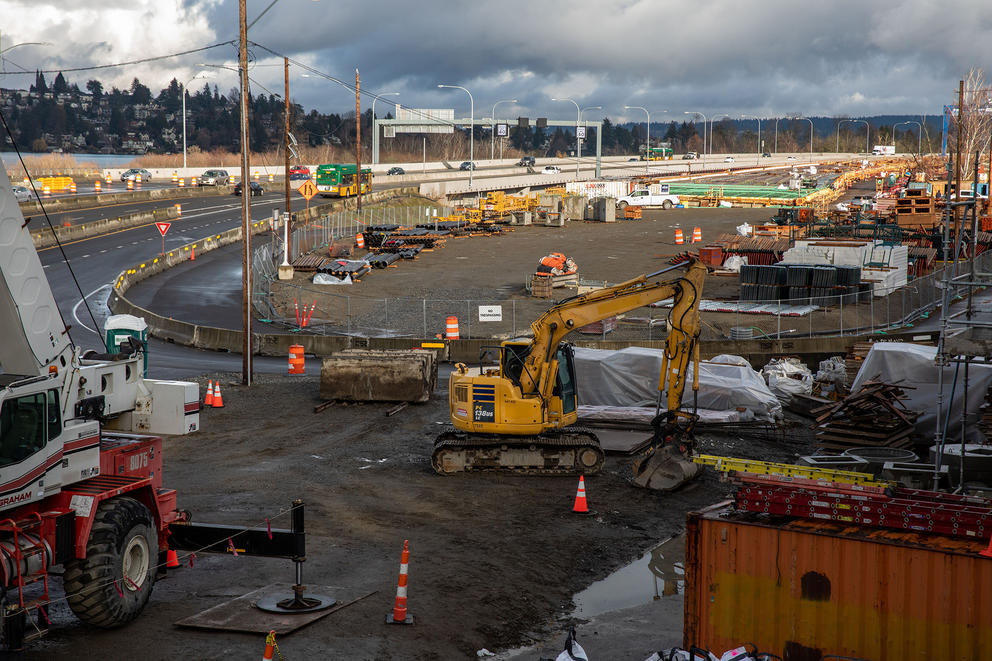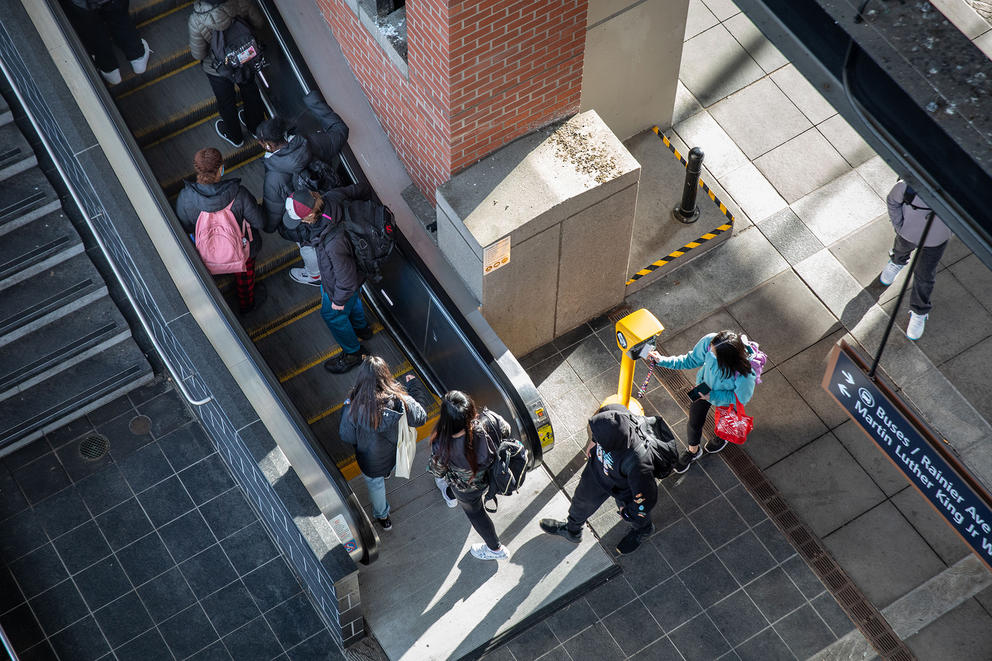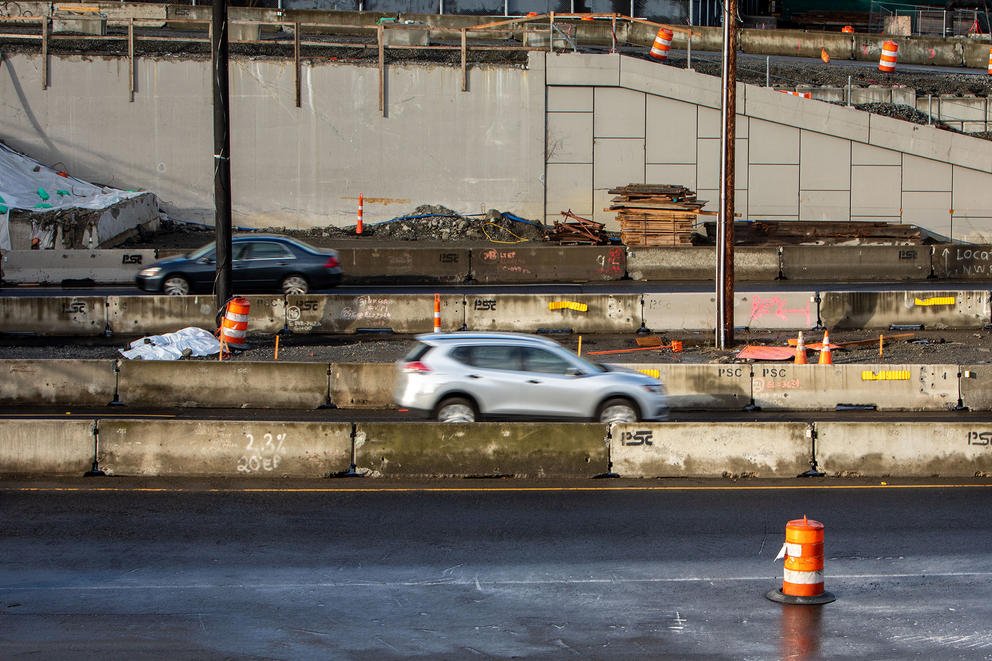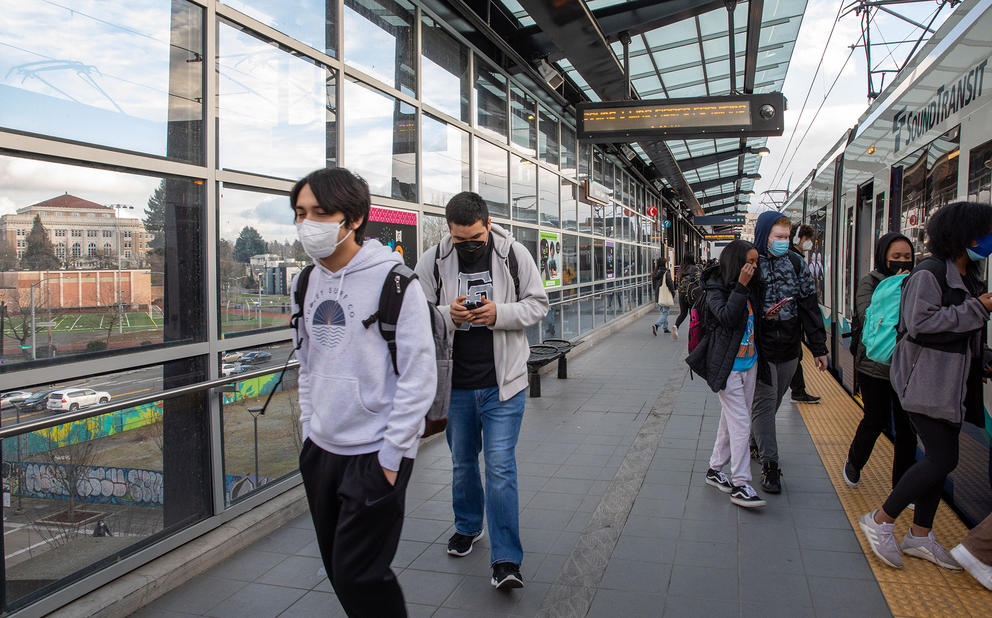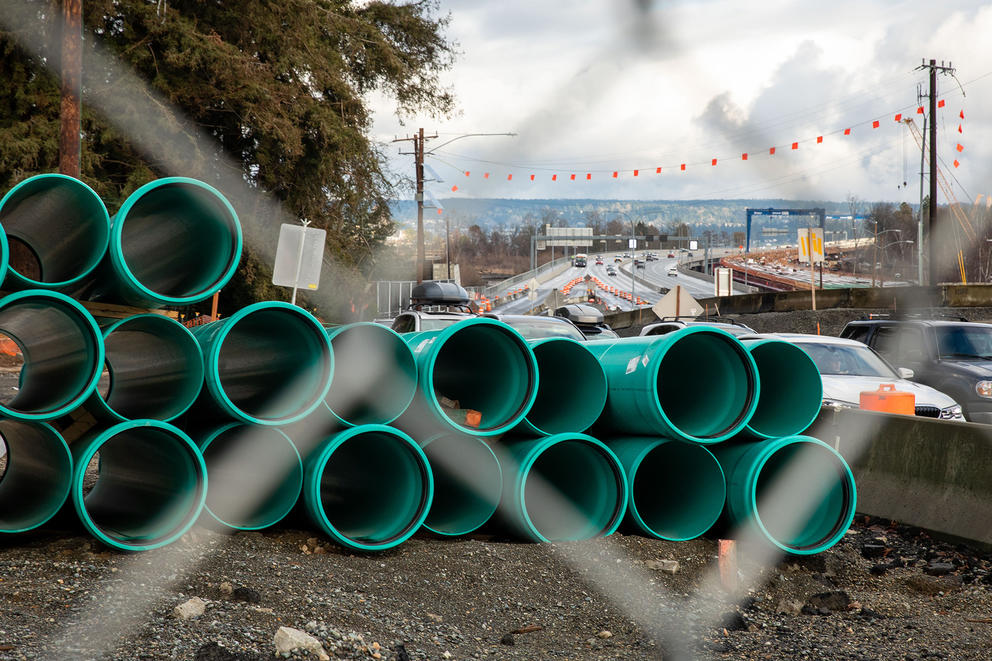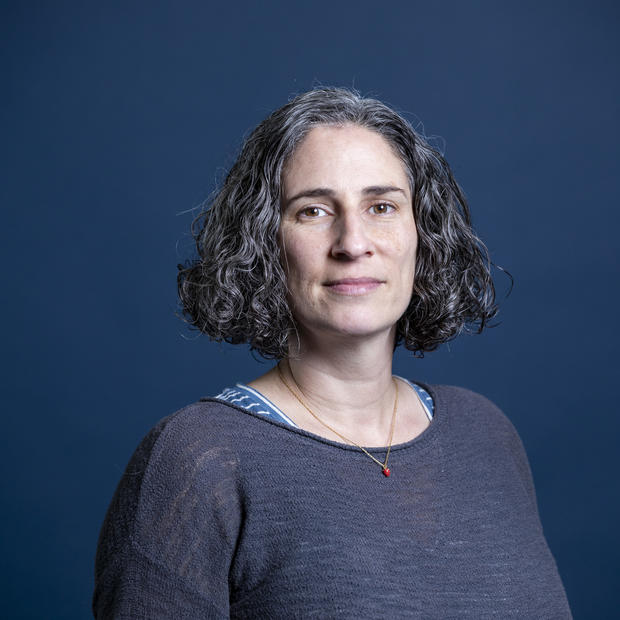As gas prices continue to rise at the pump, thanks to an uneven pandemic recovery, paired with an upcoming congressional and legislative election season (and a huge state budget surplus), lawmakers have few reasons to increase the gas tax.
As more fuel efficient cars populate the roads, the gas tax is waning in popularity and usefulness as a source of public dollars. And since the state’s gas tax is not tied to inflation, its buying power also diminishes throughout the lifetime of these big transportation spending packages. Some officials eye a road usage charge as a strong contender to bring in new transportation dollars to target those drivers paying the least in gas tax — owners of electric vehicles, called EVs, and hybrid cars — by charging a tax per mile traveled rather than a tax per gallon used.
Franklin High School students tap their ORCA transit cards before heading up the escalator to the platform at the Mount Baker light rail station. Some of the transportation package, which includes $3 billion for transit projects, is paid for by funds from the nascent carbon cap and trade bill the state passed last session. (Lizz Giordano for Crosscut)
Slowly diminishing returns
The $16.8 billion transportation package proposal quickly making its way through the state Legislature consists of two parts. One portion allocates $5.4 billion from the brand new carbon tax to pedestrian, bicycling and transit projects. Included is free transit for people 18 and under and some safe routes to school projects.
On the highway and ferry side, budget writers propose spending $11.4 billion, most of which goes to replace fish culverts, and road maintenance and expansion projects. These improvements would be paid for by money from the federal government, a fuel export tax, an increase in license plate fees and a one-time $2 billion infusion from the state’s operating budget. Though an additional funding source might be needed for these projects, as Democrats debate eliminating the controversial export fuel tax after push back from neighboring states.
If the proposed package relied on an increase to the gas tax, lawmakers would have had to double the size of the package, said state Sen. Rebecca Saldaña, D-Seattle.
“We can keep using a gas tax, but the buying power is not there,” said Saldaña, who sits on the Senate Transportation Committee.
Another option is to index the gas tax to inflation, Saldaña said, or implement a road usage charge.
A road usage charge shifts back some of the burden to pay for roads and highways to more fuel efficient and electric cars, said Reema Griffith, executive director of the Washington State Transportation Commission. Drivers of these vehicles skip the gas pump or stop less frequently. As a result, they pay less gas tax, the source of about a third of the state’s transportation budget.
“The gas tax worked and was fair when there were only like five different [electric or hybrid] models you could buy and every car got about the same mpg,” Griffith added. “Today you have this huge range of possibilities, depending on lifestyle and income.”
That burden now falls to a smaller number of people who drive average or below-average mpg vehicles, according to a report by the Washington State Transportation Commission, and those vehicles tend to be driven by people in lower-income households.
Between 2015 and 2035, gas revenue per mile driven is expected to drop 45% to about 1.3 cents per mile as the average mpg hits 35.
“Electric vehicles and fuel efficient cars aren’t paying their fair share for roads,” Griffith said. “The RUC [road use charge] has the ability to bring more equity and balance to the way we fund transportation than certainly the gas tax does.”
The Trasportation Commission started studying the feasibility of a road usage charge a decade ago, running a pilot in 2018. Participants chose between a GPS or non-GPS enabled device, and were also given the option to self-report an odometer reading to track mileage.
A bill introduced last year by Saldaña proposes to move EVs and hybrid cars to a pay-per-mile tax by 2026 because repealing registration fees specific to those vehicles didn't gain much traction in this biennium. The senator said she plans to return to the road usage charge bill next session.
Road usage charge
Currently two states, Utah and Oregon, charge a voluntary road usage fee.
The No. 1 concern has always been privacy, said Michelle Godfrey, a spokesperson for Oregon Department of Transportation, which runs the state’s road usage charge program.
The agency uses third party vendors to run the program so the state never has access to any location data, which must be destroyed every 30 days, Godfrey said. Washington’s pilot also allowed participants to choose a self-reported odometer reading that could be done in conjunction with renewing car tabs.
In its early days, the Oregon road usage charge hit a snag after the state allowed any vehicle to shift from paying a gas tax to a road usage fee, resulting in drivers of less efficient cars paying less per mile than the per gallon charge, in part because they also received refunds for gas taxes paid.
“We were actually paying them to drive,” Godfrey said. “It’s unpalatable, at least in Oregon, to have so-called gas guzzlers getting refunds or credit.”
While the amount returned to drivers was minimal, Godfrey said, it raised a red flag. The Legislature responded by establishing a minimum estimated mpg of 20 for participation.
Currently about 770 Oregonians opt in to the program, under which vehicles pay a voluntary 1.9 cents per mile driven while receiving credits back for any gas tax paid and a reduction in registration fees. And drivers no longer get a payout if gas tax refunds exceed road usage fees.
Growing the program will likely be an uphill battle because it involves persuading some drivers to willingly take on what could be a larger tax burden, depending on how much they drive.
While Western states have experimented with pilots for these new systems, no state has yet to implement one statewide.
Max Baumhefner, an attorney with the Natural Resources Defense Council, said two of the biggest obstacles are privacy concerns and high administration costs.
“And I think there's a serious environmental question,” Baumhefner said. “Gas tax is the biggest price on pollution that we have in this country and throwing that to the gutter doesn’t make a lot of sense.”
The Mount Baker light rail station fills quickly after the last bell of the day rings at Franklin High School in the Rainier Valley. The proposed package funnels more than $3 billion to transit, including funds for transit agencies to provide free rides to those 18 and under. (Lizz Giordano for Crosscut)
A flat road usage charge basically penalizes efficiency and rewards pollution, Baumhefner said. One option to remedy this is to tier the road usage tax based on vehicle efficiency. Or more dollars could be brought in — while continuing to punish gas guzzlers — by indexing the gas tax to inflation, as many other states have done, he added.
“Inflation eats away the value of money; it accounts for the vast amount of revenue losses,” Baumhefner said, “and dwarfs any losses from electric vehicles.”
A road-usage charge for electric vehicles makes sense to state Sen. Phil Fortunato, R-Auburn, though the cost to implement is a concern for him.
Another option to increase transportation revenues is to transfer car sales tax income to the transportation fund, Fortunato said.
“It’s an inflation-linked funding source,” Fortunato said, “and would also then solve the EVs issue too.”
There’s enough money, Fortunato says, pointing to the recently announced financial windfall forecasted to come, to fill budget gaps left by shifting that money without raising or adding any taxes.
But for now, the gas tax isn’t going anywhere anytime soon; there’s too much debt tied to it. As it stands now, by the end of the decade, debt will consume 67% of gas tax revenue, estimated Griffith of the Transportation Commission.
“We’re going to be living with it for a while,” Griffith said, “until it slowly dies away, as the fleet shifts over to electric.”

